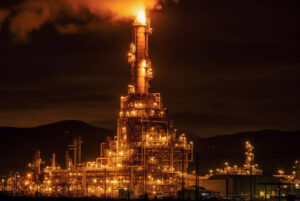Navigating Market Trends: The Impact of Weather and Tariffs on LNG Prices
As traders gear up for the upcoming week, attention is focused on evolving weather patterns that could significantly influence market behavior. Recent forecasts indicate the emergence of cooler trends, but these changes have not been sufficiently pronounced to push prices through critical resistance levels. What does this mean for you as an investor?
As part of the Extreme Investor Network, we analyze the nuances that are often overlooked in mainstream discussions, empowering our community with actionable insights.
Weather Patterns and Heating Demand
Investors should keep a close eye on forecasts in the coming days. If the predicted colder air masses extend deeper into the Midwest and East, we may see a surge in heating demand that could bolster a bullish scenario for natural gas prices. On the flip side, should mild weather prevail, the potential for upward price movement could remain restricted.
Understanding these weather-related dynamics is crucial for making informed trading decisions. Consider utilizing temperature forecasts as a metric when planning your investments in the energy sector.
EIA Storage Deficit: The Numbers that Matter
According to the latest report from the Energy Information Administration (EIA), a noteworthy 174 billion cubic feet (Bcf) drawdown has brought the total working gas to 2,397 Bcf. This figure is not just a number; it tells a compelling story of market dynamics:
- 208 Bcf lower than last year
- 111 Bcf below the five-year average
This data indicates a tightening supply situation, particularly in the Midwest and South Central regions, where demand typically heats up during colder months. Alarmingly, the South Central region specifically experienced a significant 12 Bcf decrease in salt storage, raising valid concerns regarding short-term supply volatility.
For those holding positions in this sector, it’s essential to bear in mind that for a bullish breakout to occur, these storage draws must accelerate beyond usual seasonal norms. A sustained tightening of supply could serve as a catalyst for price increases, which is crucial information to factor into your trading strategies.
U.S. LNG Exports Under Pressure from Tariffs
In another development that directly impacts the market landscape, China has implemented a 15% tariff on U.S. liquefied natural gas (LNG) exports, effective February 10. This response to new U.S. trade measures presents a double-edged sword for investors.
While immediate domestic prices may not be affected, the long-term implications are significant. Should China reduce its purchases of U.S. LNG, a surplus could build in global supply, placing downward pressure on prices and potentially destabilizing the broader market. Analysts predict that this could lead to a reevaluation of U.S. export strategies and pricing models moving forward.
Understanding these geopolitical factors is vital for gaining a competitive edge in today’s fast-paced marketplace. Keeping track of international policies and their impacts on local markets is key in the world of trading.
Conclusion
The current climate in the energy market, characterized by changing weather patterns and international tariff strategies, emphasizes the importance of staying informed and involved. At Extreme Investor Network, we strive to provide insights that not only keep you ahead of the curve but also equip you with the necessary tools to make informed decisions.
Navigating the complexities of trading requires a proactive approach. By understanding the factors affecting supply and demand, alongside the geopolitical landscape, you position yourself to better capitalize on emerging market opportunities. Join us as we continue to track these trends, providing in-depth analysis and resources to enhance your trading strategies.
Stay connected with us for ongoing updates and detailed reports that can help you navigate the ever-changing market landscape with confidence!

